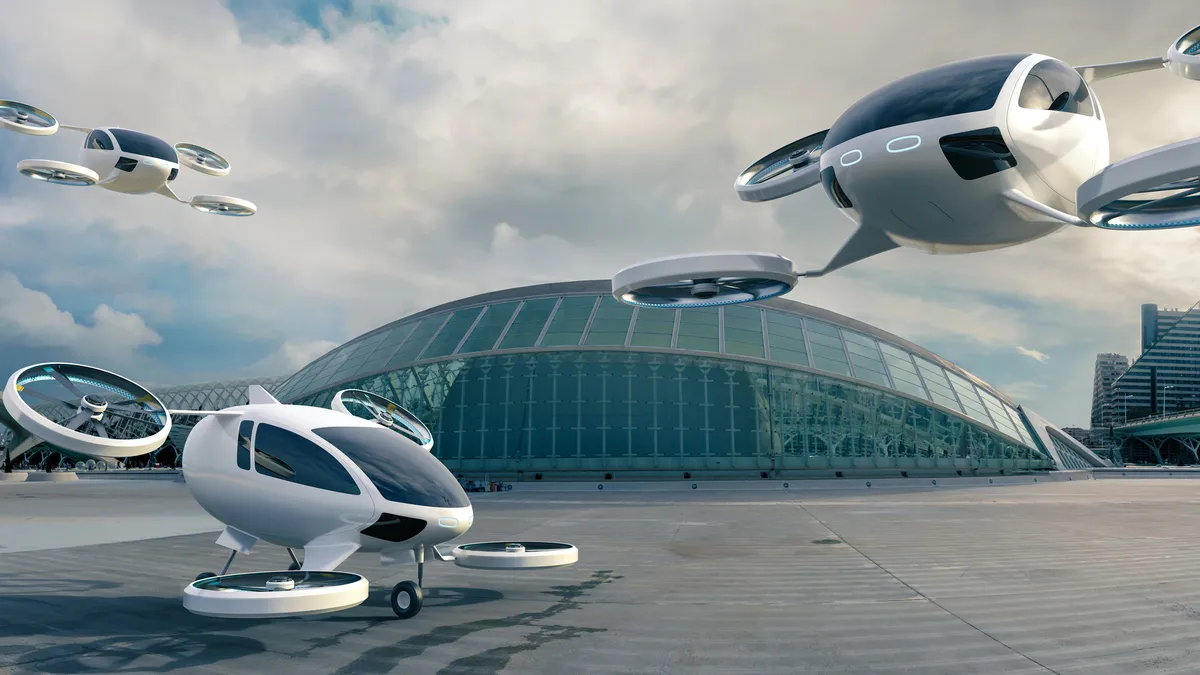Some cities have already begun planning for the advent of air taxis — those electrically powered aircraft that can take off and land vertically like a helicopter — while others are shying away from the idea. That’s according to Adam Cohen, survey researcher at the Berkeley Transportation Sustainability Research Center and an author of a newly released report on planning for advanced air mobility from the American Planning Association.
Developers of these eVTOL aircraft are moving forward rapidly, with some planning to begin commercial operations as soon as 2025. The Federal Aviation Administration published guidelines for the operation of air taxis in the nation’s airspace last year, expecting growth to accelerate beginning in 2028.
New York City Mayor Eric Adams committed to supporting air taxis while attending a demonstration flight from the downtown Manhattan heliport in November. Archer Aviation founder and CEO Adam Goldstein named Atlanta, Los Angeles, San Francisco, South Florida and Texas as potential future markets, while Boeing subsidiary Wisk plans to bring autonomous air taxis to the greater Houston area as soon as 2030.
Cohen calls these cities the “early adopters” but said that for others, “It's either ‘no go, no way in heck are we going to pursue this,’ to ‘maybe down the road, but not now.’”
Why is that? “Most local governments don’t dabble in aviation issues,” Cohen said. “There is a lack of education and outreach regarding roles and responsibilities at the local level with respect to aviation issues,” he added.
“Aviation planners and urban planners have operated in distinct realms,” Cohen said. “We really think it's important to bring these two stakeholder groups together to create some of the optimal outcomes that we would like to see.”
One area for collaboration is planning future development near vertiports. Aircraft will need approach and departure paths, and a tall building erected near a vertiport could affect flight operations. “Bringing the safety focus to urban planners is really important,” he said.
Cohen pointed to several open questions about air taxis, which are outlined in the report. These include zoning ordinances regarding where vertiports would be located, concerns about social equity impacts and whether investments in advanced air mobility would come at the expense of other critical programs. Cohen added that questions remain about whether air taxis will ever be affordable for most people.
The report states that integrating air taxis with surface transportation modes will be important, suggesting locating vertiports in walkable areas with access to public transportation, shared mobility and micromobility options.
One tricky issue revolves around who pays for the vertiports. If FAA funds are used, the vertiport may be required to permit night and early morning operations, while a privately funded facility could more readily limit flight times. Cohen brought up other questions about the siting of vertiports. “Is it causing gentrification or displacement? Is it causing adverse environmental impacts? Am I flying over underserved communities?” he asked.
The report concludes that the public sector will need to understand public perceptions of advanced air mobility deployments, develop zoning provisions, evaluate demonstrations and early operations and prioritize stakeholder and community engagement.
The nascent air taxi industry must address these issues as well, Cohen said. “There’s going to need to be a lot more work on the engagement side to how we provide broad societal benefit to this technology,” he said. “If industry doesn't address this, sooner versus later, there's a real risk that it could reach a boiling point.”












